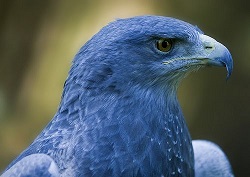A Young Adult fantasy adventure novel by Jack Duffe
A Young Adult fantasy adventure novel by Jack Duffe
The world of Aether Torrent would be perfectly ordinary if not for all the magic and monsters.
Find here everything that newcomers need to know.
Aetherics -- Elementism -- Technolology -- ZoologyAnimals are all forms of life in the kingdom Animalia of the human system of taxonomy. Some animals are sapient, possessing mental faculties of subjective self-awareness and judgment in addition to ordinary intelligence. The world hosts multiple sapient species, but two currently predominate: humans and raiza.
Animalia Chordata Mammalia Primates Hominidae Homo sapiens
You are probably one of these.
(Edits by the FCC.)
Full adulthood tends to begin between ages 18-21, but earlier or later maturity is possible. Given optimum nutrition and safety (a rare combination), some humans can live over 100 years.
No single political institution unifies humanity. The most notable in modern world events are the powerful Imperacy of Ragla, the populous Republic of Amrita, and the island nation of Dorn.
A recent multinational census estimated that the human population now numbers one billion.

Surplus to purposes.
Animalia Chordata Armosichthyes Syreni Raizae Raiza sapiens
(Art credit: LKD.)
Raiza gestate for over a year and can swim and run (on all fours) within an hour of birth. They mature in proportion to food supply; a well-fed raiza can reach full adulthood around age 10. Male raiza are comparable in height to human males, but female raiza are typically larger.
The three major "breeds" of raizan morphology are named for colors: Gray, Brown, and Blue. Each varies in fin shape, native range, and of course pigmentation. Brown, for instance, are strictly freshwater, whereas Blue prefer cool depths and Gray enjoy warm coasts.
As might be expected, raiza can breathe underwater. Cilia in their lungs absorb oxygen from air, while cilia in the flat bronchial tubes from their gills to their lungs absorb oxygen from water. Sensory pores on the undersides of their noses can detect the faint bio-electricity of muscle movements. Raiza voices are typically deep and can even pitch into infrasound, causing psychological effects in humans.
Raiza assimilate well into non-raiza cultures when desired. For example, they wear clothes if there is any chance of contact with humans, even though by human standards they have nothing to see. Their total population is believed to be lower than humans, but given that they can live comfortably underwater, an accurate census is impossible.

The word raiza is a human approximation of the native raiza word for themselves. Native raiza languages are deep, sonorous, and vowel-free, making them difficult to transcribe. In the time when raiza preyed on humans, luring them with voices laden with ultrasonic charisma, humans called raiza "sirens," but that term has developed into a racial epithet.

Some animals may be monstrous in appearance, such as the forest-lurking hearteater (Tamandua dirus), but true monsters are a class apart.
Monsters are animals which are born with aether focused in their bodies. They control magic of their birth element as if it were an appendage. Most monsters belong to their own species, such as the ziz (Argentavis procellae). All zizes are Air monsters and always will be.
A rare few monsters are mutants, one-off creatures born to ordinary parents of an ordinary species. Presumably, all monster species originated with highly lucky and/or highly fertile elemental mutants. Science is at a loss to explain what exactly causes aetheric mutations to arise.
Certain monster species possess such superlative magical ability, they can shapeshift. The carnivorous water horses known as kelpies (Backahasti nix) are notorious examples, but kelpies are wild. They can take the forms of sapients, but only as glamors -- elemental disguises. Kelpies can only truly transform into an oily polymorphic gel.
Sapient shapeshifting monsters, those whose alternate forms resemble ordinary sapients, are as apart from ordinary monsters as ordinary monsters are from animals. They even have a special classification.
The most feared and revered of all monsters are sapient shapeshifters called Sacred Beasts, which can take on the form of another species. One type in particular is very well known.
Wind tigers (Panthera sylphigris), feline creatures with cartilaginous sensory crests and collarbone-mounted wings, can transform into human shape. In the wild, they roam the skies of territories that may be as big as countries. Some practice tiger-like retiring solitude while others roam as small nomadic family units. Those who assimilate into human society are careful to police their fellow wind tigers, lest a few violent individuals turn all of humanity against them.
 2007-2025 Jack Duffe, all rights reserved.
2007-2025 Jack Duffe, all rights reserved.